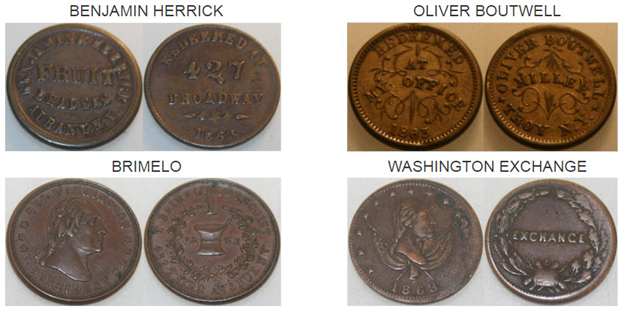Trade Tokens
Posted by Tom Deaux on Feb 19th 2021
Background
Trade Tokens were made starting around 1817. The tokens were made as a substitute for real coins, which were in short supply. An added benefit was the advertising platform provided.
A few companies made the dies for these tokens. Trade Tokens continued to be made through the ‘Hard Times’ and ‘Civil War’ token periods
Numerous Scarce Issues
Merchants had tokens made in various quantities. Some are scarce, some rare with mintages of less than 10, though the typical production was 100 or more. There are scarce and rare issues available as a result.
Russell Rulau developed the comprehensive book “Standard Catalog of US Tokens”. The 4th Edition was published in 2004. This Catalog is the industry standard for US Tokens, including Trade Tokens.

Example Trade Tokens
Here are some example trade tokens, including a Fruit
Dealer, a Miller, a Druggist, and a Patriotic token.
Here are more examples of Trade Tokens. Included are the
Washington Market Exchange in New York City, a Glass Works, and a Hairpin
Manufacturer.
And finally four more (there are thousands of others). A
Masonic Token, a token manufacturer (Osbourne), an Apache Reservation Trading
company in San Carlos, Arizona, and a ‘Spiel Marke’ (German for ‘Play Money’)
token.
Summary
This has been a brief look into US Trade Tokens. They are popular among collectors in a broad price range and are an interesting window into US history. Thousands of different issues were made in the 1800’s. They can be inexpensive to collect and very rewarding.
